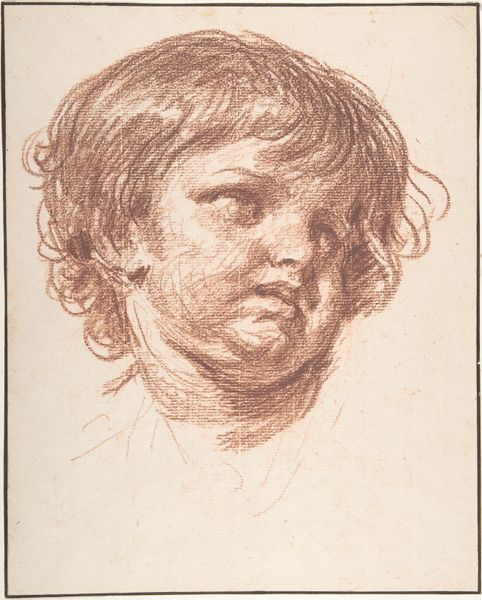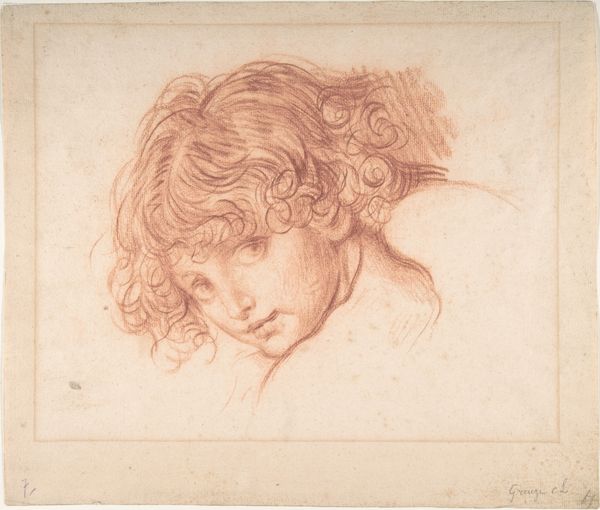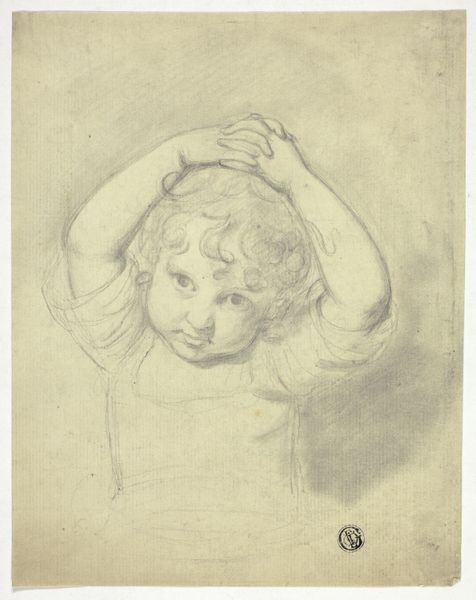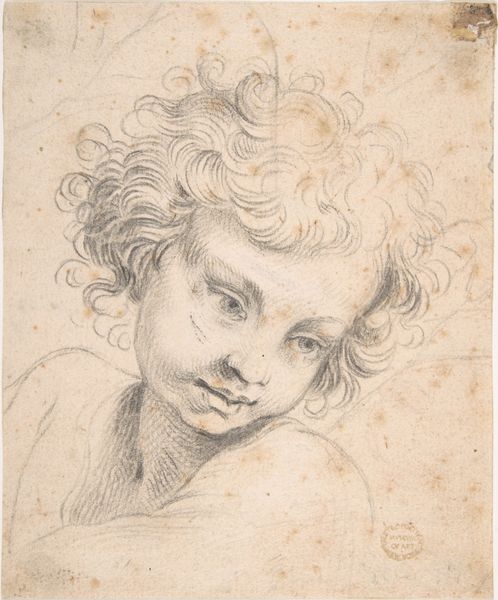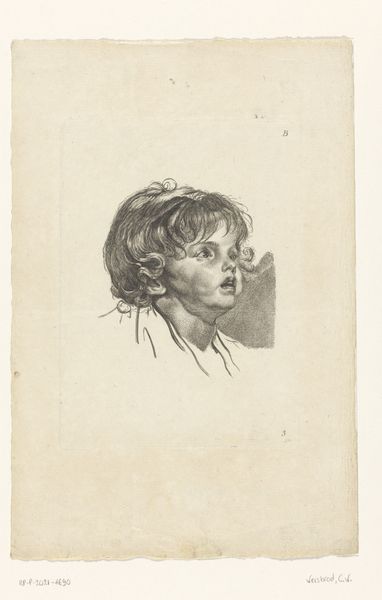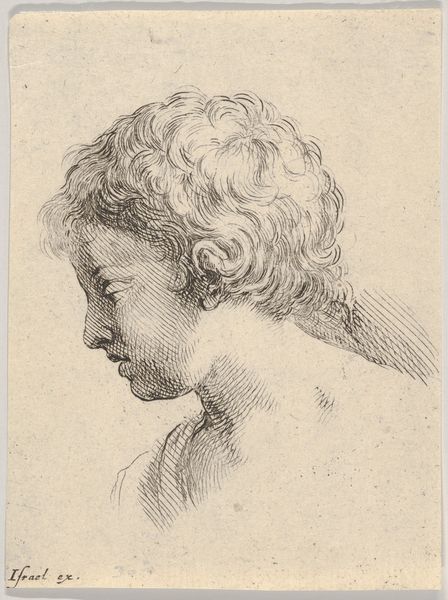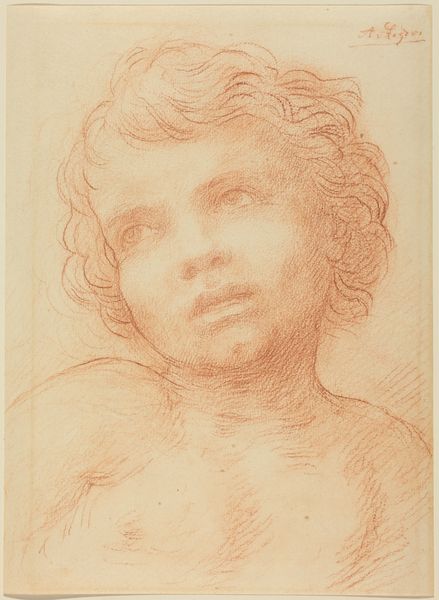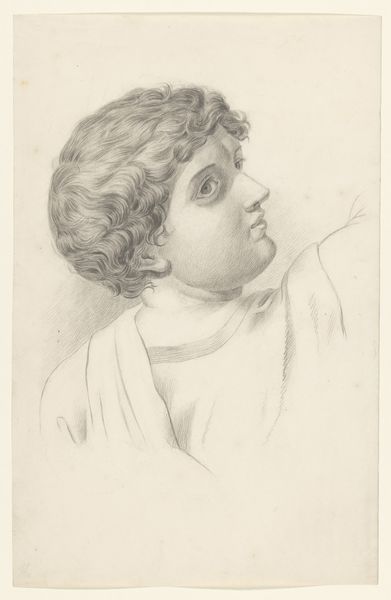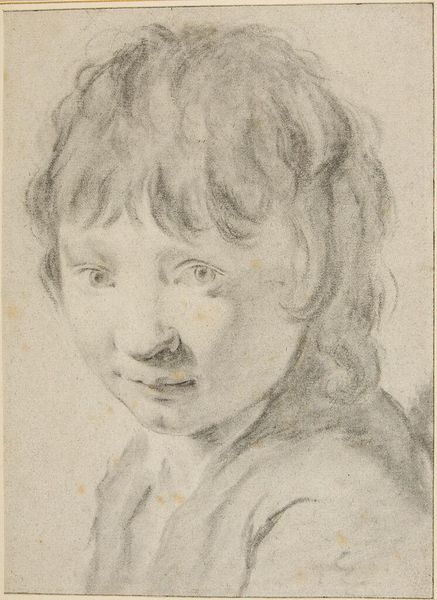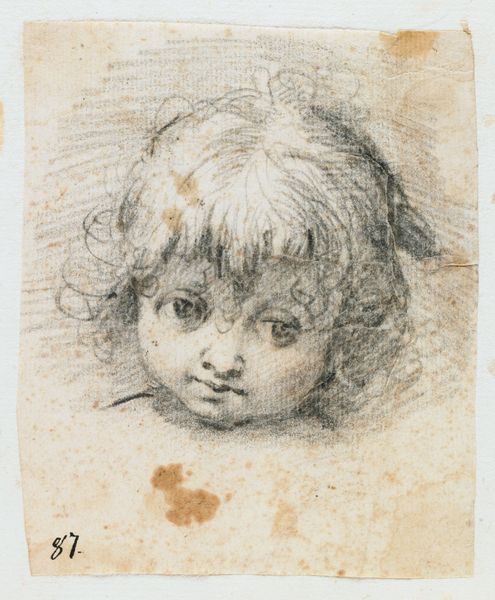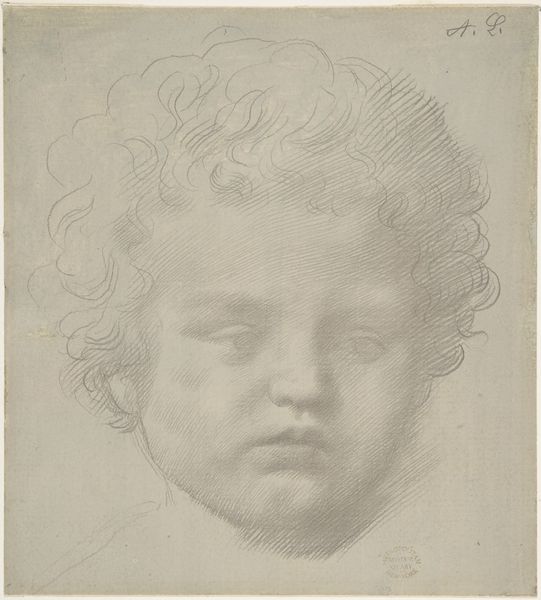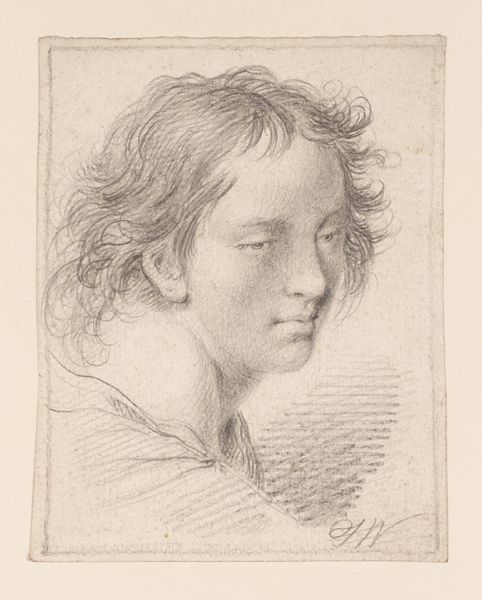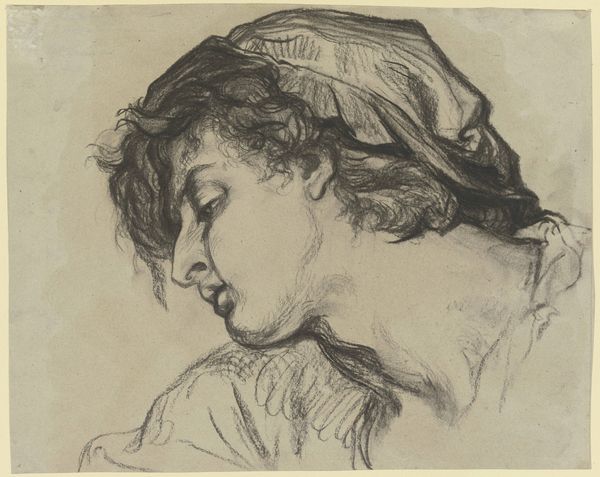
Dimensions: 251 mm (height) x 186 mm (width) (bladmaal)
Editor: This is Antonio Cavallucci's "Head of a Boy," a pencil drawing from sometime between 1751 and 1795. The boy’s expression is captivating. It seems like a moment of surprise or even fear has been captured. What historical context might shed light on this portrait? Curator: Indeed. Considering the late 18th century, the art world was rapidly evolving. We see academic art traditions grappling with emerging Romantic ideals. Could this drawing be an exercise, a student work intended to master the expression of emotion, or might it speak to a larger shift in how childhood was being perceived and portrayed? Were children becoming subjects of artistic and social interest in new ways during this period? Editor: That’s interesting, this era certainly shows an emerging sensibility towards the child figure in art. I didn't think of that. So, it goes beyond just technique; the subject matter is changing, too. Curator: Precisely. The "Head of a Boy" then becomes more than just a drawing; it becomes a social document. Think about the institutions that shaped Cavallucci's artistic practice – academies, patronage, the evolving art market. How did those forces influence the choices he made in creating this piece? And how does the drawing engage in a dialogue with similar depictions from the time? Editor: So, understanding those institutions helps us decode the image further. Instead of seeing just a head, we're seeing a nexus of cultural and historical influences! Curator: Exactly! Art rarely exists in a vacuum. By examining the surrounding structures, we can appreciate the artwork's role within a larger societal conversation. Editor: That connection to social forces, it makes the work even more vibrant, actually! Thanks for that insightful perspective!
Comments
No comments
Be the first to comment and join the conversation on the ultimate creative platform.
